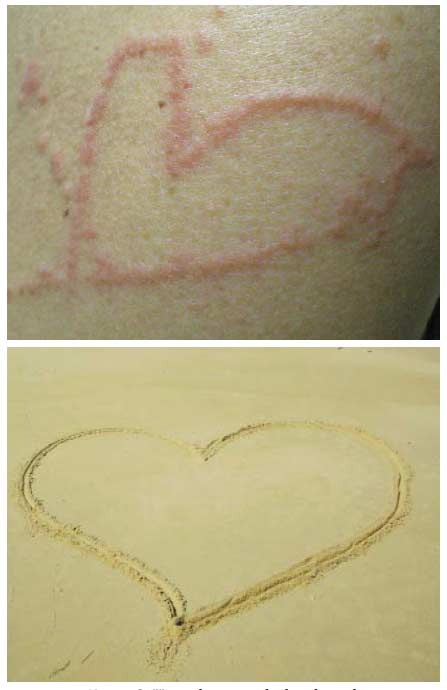- explain Maria do Carmo Araujo Palmeira Queiroz and Juliana Nascimento de Andrade Rabelo Caldas, the Brazilian authors of a recent paper in the journal Anais Brasileiros de Dermatologia.

Nonetheless, an individual presenting a dermatological injury similar to the one shown will probably not be in the mood for romance – for the characteristic heart-shaped lesion is typical of a brush with Physalia physalis, the notorious Portuguese Man o’ War jellyfish.
Treatment for the painful (and occasionally even fatal) marine assault should be prompt. After the sting-cells (nematocysts) have been de-activated with vinegar or isopropyl alcohol they can be removed.
“Removal of nematocysts can be made covering the area with shaving cream, talcum powder and sodium bicabornate for a period of one hour. After that, one should use a blunt object to remove the lesion. A powerful adhesive tape can be put on the lesion and it should be immediately removed.”
The authors also provide a picture of a heart drawn in beach-sand for comparison (shown above)
The paper : Comparative dermatology: skin lesion produced by attack of jellyfishes (Physalia physalis) is published in An. Bras. Dermatol. vol.86, no.3, Rio de Janeiro May/June 2011.
Many thanks to Antonio C. Marques, Assoc. Prof. Depto Zoologia, Inst. Biociencias, Universidade de Sao Paulo for alerting me to the paper.




Comments